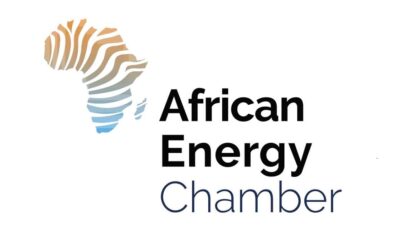MARRAKECH, Morocco, April 15, 2025/APO Group/ –During the third annual edition of GITEX AFRICA Morocco (
www.GITEXAfrica.com), the continent’s largest tech and startup show, His Excellency Mr. Amine Tehraoui, Morocco’s Minister of Health and Social Protection announced the launch of GITEX FUTURE HEALTH AFRICA/Morocco – in partnership with KAOUN International, organiser of GITEX in Africa and globally.
The much anticipated and pivotal event for the healthcare economy was officially launched with the signing of the partnership agreement, and will be held under the authority of Morocco’s Minister of Health and Social Protection, hosted in partnership with Mohammed VI Foundation for Sciences and Health (FM6SS), and organised by KOAUN International, the organiser of GITEX in Africa and globally.
To be hosted in Casablanca from 21-23 April 2026, GITEX FUTURE HEALTH AFRICA/Morocco, featuring GITEX DIGI_HEALTH, is set to lead the transformation impetus of Morocco and Africa to combat challenges in healthcare information, delivery, access and efficiency, capitalising on the emergence of AI and digital technologies.
The event will prioritise public-private partnerships which are particularly instrumental in this digital mission to advance the industry productively and efficiently
H.E. Mr. Amine Tehraoui, Minister of Health and Social Protection, stated: “GITEX FUTURE HEALTH AFRICA/Morocco embodies the Kingdom’s unwavering commitment to health as a fundamental and universal human right, enshrined in our national vision for health system reform. As digital innovation, data intelligence, and health tech increasingly shape the future of care delivery across Africa, this platform reinforces Morocco’s position as a regional hub for collaboration, talent, and investment. Through international partnerships, strategic innovation, and shared expertise, we have a unique opportunity to co-build inclusive, resilient, and people-centered healthcare systems for the continent and beyond.”
For its part, the Mohammed VI Foundation for Sciences and Health emphasized its strategic vision: “As a major player in the fields of health, training, and scientific research, the Mohammed VI Foundation for Sciences and Health is committed, alongside the Ministry of Health and Social Protection and KAOUN International, to making Morocco a continental hub for healthtech. By contributing its medical and academic expertise through the development of digital health and medical technologies in Morocco and Africa, we aim to help shape the healthcare ecosystem of tomorrow.”
Morocco has emerged as a pioneer in digital health initiatives and advancing expeditiously towards an integrated health information system, fostering the adoption of innovative medical technologies to build a resilient healthcare infrastructure and system. The African healthcare market is estimated to be worth US$259 billion and expected to become the second biggest market after the US by 2030.
Trixie LohMirmand, CEO of KAOUN International, organiser of GITEX globally, commented: “There is urgency from governments and healthcare institutions worldwide – and especially in Africa – to modernise and digitise their healthcare services to increase reach, reduce healthcare costs and deliver better patient outcomes. GITEX FUTURE HEALTH AFRICA/Morocco will highlight the role and growing influence of AI and new digital solutions to improve data-driven decision making and reduce health inequities. The event will prioritise public-private partnerships which are particularly instrumental in this digital mission to advance the industry productively and efficiently.”
The three-day event will open with an agenda shaping leadership summit tackling powerful themes – accelerating cutting-edge solutions set to transform access, outcomes and health equity. Targeting decision-making executives from hospitals and healthcare institutions, health ministers and government leaders, CIOs, CTOs, innovators and disruptors, and public health policymakers – topics during the summit will explore health infrastructure, expanded access to healthcare, investment and research, data security and national records integration, health and data analytics, and AI-powered diagnostics.
An exhibition will bring together top researchers, practitioners, innovators, and experts from the global healthcare industry – representing Africa’s most important gathering of medical & lab equipment, imaging & diagnostics, IT systems & solutions, healthcare infrastructure, healthcare transformation, smart hospitals, healthcare management, and digital health management systems in Africa.


 Business2 days ago
Business2 days ago
 Business2 days ago
Business2 days ago
 Business2 days ago
Business2 days ago
 Business2 days ago
Business2 days ago
 Business2 days ago
Business2 days ago
 Business2 days ago
Business2 days ago
 Business21 hours ago
Business21 hours ago
 Business21 hours ago
Business21 hours ago










